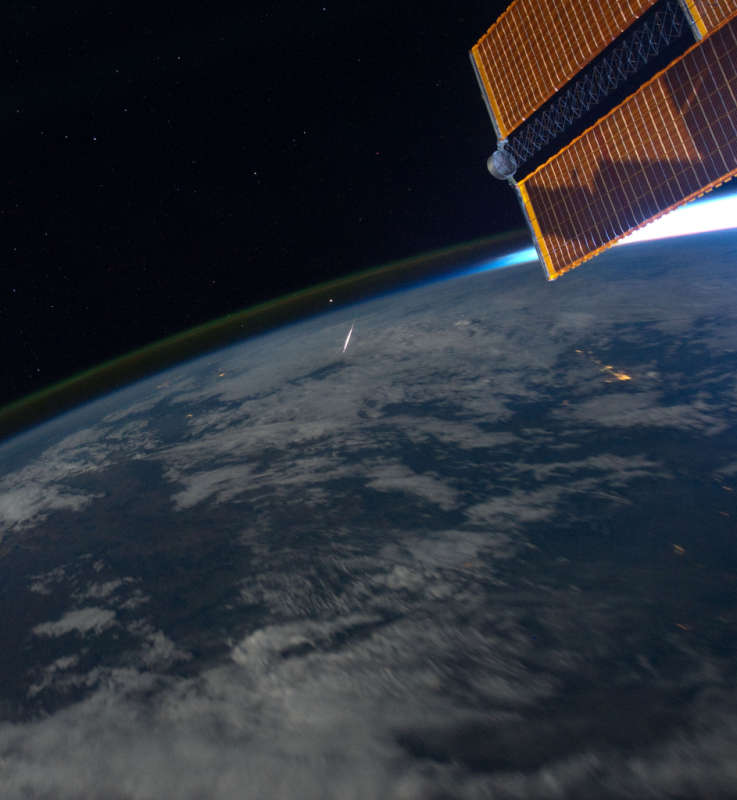Credit & Copyright: Ron Garan,
ISS
Expedition 28 Crew,
NASA
Explanation:
Denizens of planet Earth typically watch meteor showers
by looking up.
But this
remarkable view,
captured on August 13, 2011 by astronaut Ron Garan,
caught a Perseid meteor by looking down.
From Garan's perspective on board the
International Space Station
orbiting at an altitude of about 380 kilometers,
the Perseid meteors streak below,
swept up dust from
comet Swift-Tuttle.
The
vaporizing
comet dust
grains are traveling at about 60 kilometers per second through
the denser atmosphere around 100 kilometers above Earth's surface.
In this case, the foreshortened meteor flash is near frame center,
below the curving limb of the Earth and a layer of greenish
airglow, just below bright star Arcturus.
Want to look up at a meteor shower?
You're
in luck,
as the 2024 Perseid meteor shower
is active now and predicted to peak near August 12.
With interfering bright moonlight absent, this year you'll likely
see many Perseid meteors under clear, dark skies after midnight.
1999 2000 2001 2002 2003 2004 2005 2006 2007 2008 2009 2010 2011 2012 2013 2014 2015 2016 2017 2018 2019 2020 2021 2022 2023 2024 2025 |
Январь Февраль Март Апрель Май Июнь Июль Август Сентябрь Октябрь Ноябрь Декабрь |
NASA Web Site Statements, Warnings, and Disclaimers
NASA Official: Jay Norris. Specific rights apply.
A service of: LHEA at NASA / GSFC
& Michigan Tech. U.
|
Публикации с ключевыми словами:
Perseids - Персеиды
Публикации со словами: Perseids - Персеиды | |
См. также:
Все публикации на ту же тему >> | |
